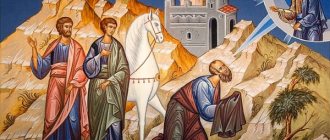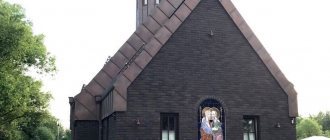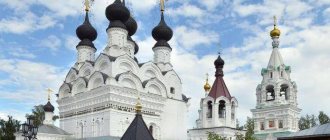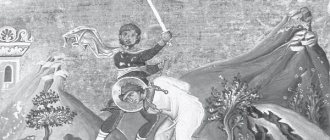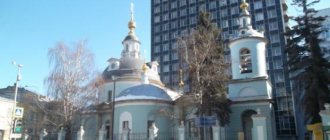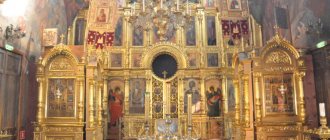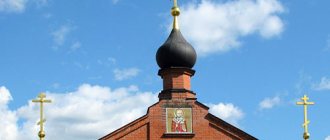Mir
Russia Moscow Temple of the Holy Blessed Prince Peter and Princess Fevronia, Murom Wonderworkers (Moscow) Map is loading...
{"format":"leaflet","minzoom":false,"maxzoom":false,"limit":50,"offset":0,"link":"all","sort":[""], "order":[],"headers":"show","mainlabel":"","intro":"","outro":"","searchlabel":"\u2026 \u0441\u043b\u0435\ u0434\u0443\u044e\u0449\u0438\u0435 \u0440\u0435\u0437\u0443\u043b\u044c\u0442\u0430\u0442\u044b","default":"","import-annotation":false,"width ":"auto","height":"350px","centre":{"text":"","title":"""link":"""lat":55.59448499999999881993062444962561130523681640625,"lon": 37.544454999999999245119397528469562530517578125,"icon":""},"title":"","label":"","icon":"","lines":[],"polygons":[],"circles":[ ],"rectangles":[],"copycoords":false,"static":false,"zoom":8,"defzoom":14,"layers":["OpenStreetMap"],"image layers":[] ,"overlays":[],"resizable":false,"fullscreen":true,"scrollwheelzoom":true,"cluster":false,"clustermaxzoom":9,"clusterzoomonclick":true,"clustermaxradius":80, "clusterspiderfy":true,"geojson":"","clicktarget":"","showtitle":true,"hidenamespace":false,"template":"","userparam":"","activeicon": "","pagelabel":false,"ajaxcoordproperty":"","ajaxquery":"","locations":[{"text":"\u003Cb\u003E\u003Ca href=\"/palomnik/%D0% A5%D1%80%D0%B0%D0%BC_%D1%81%D0%B2%D1%8F%D1%82%D1%8B%D1%85_%D0%B1%D0%BB%D0%B0% D0%B3%D0%BE%D0%B2%D0%B5%D1%80%D0%BD%D1%8B%D1%85_%D0%BA%D0%BD%D1%8F%D0%B7%D1% 8F_%D0%9F%D0%B5%D1%82%D1%80%D0%B0_%D0%B8_%D0%BA%D0%BD%D1%8F%D0%B3%D0%B8%D0%BD% D0%B8_%D0%A4%D0%B5%D0%B2%D1%80%D0%BE%D0%BD%D0%B8%D0%B8,_%D0%9C%D1%83%D1%80% D0%BE%D0%BC%D1%81%D0%BA%D0%B8%D1%85_%D1%87%D1%83%D0%B4%D0%BE%D1%82%D0%B2%D0% BE%D1%80%D1%86%D0%B5%D0%B2_(%D0%9C%D0%BE%D1%81%D0%BA%D0%B2%D0%B0)\» title=\»\ u0425\u0440\u0430\u043c \u0441\u0432\u044f\u0442\u044b\u0445 \u0431\u043b\u0430\u0433\u043e\u0432\u0435\u0440\u043d\u044b\u0 445\u043a\u043d\u044f\u0437\ u044f \u041f\u0435\u0442\u0440\u0430 \u0438 \u043a\u043d\u044f\u0433\u0438\u043d\u0438 \u0424\u0435\u0432\u0440\u043e\u043d\ u0438\u0438,\u041c\u0443\u0440 \u043e\u043c\u0441\u043a\u0438\u0445 \u0447\u0443\u0434\u043e\u0442\u0432\u043e\u0440\u0446\u0435\u0432 (\u041c\u043e\u0441\ u043a\u0432\u0430)\" \u003E\u0425\u0440\u0430\u043c \u0441\u0432\u044f\u0442\u044b\u0445 \u0431\u043b\u0430\u0433\u043e\u0432\u0435\u0440\u043d\ u044b\u0445\u043a\u043d\u044f \u0437\u044f \u041f\u0435\u0442\u0440\u0430 \u0438 \u043a\u043d\u044f\u0433\u0438\u043d\u0438 \u0424\u0435\u0432\u0440\u043 e\u043d\u0438\u0438,\u041c\ u0443\u0440\u043e\u043c\u0441\u043a\u0438\u0445 \u0447\u0443\u0434\u043e\u0442\u0432\u043e\u0440\u0446\u0435\u0432 (\u041c\u0 43e\u0441\u043a\u0432\u0430 )\u003C/a\u003E\u003C/b\u003E\u003Chr /\u003E\u003Ca href=\»/palomnik/%D0%A1%D0%B2%D0%BE%D0%B9%D1%81%D1% 82%D0%B2%D0%BE:%D0%90%D0%BD%D0%BD%D0%BE%D1%82%D0%B0%D1%86%D0%B8%D1%8F\" title= \u0421\u0432\u043e\u0439\u0441\u0442\u0432\u043e:\u0410\u043d\u043d\u043e\u0442\u0430\u0446\u0438\u044f\"\u003E\u0410\u04 3d\u043d\u043e\ u0442\u0430\u0446\u0438\u044f\u003C/a\u003E: \u0445\u0440\u0430\u043c \u043f\u0440\u0438 \u0422\u0435\u0440\u0440\u0438\u044 2\u043e\u0440\u0438\u0430 \u043b\u044c\u043d\u043e\u043c \u0446\u0435\u043d\u0442\u0440\u0435 \u0441\u043e\u0446\u0438\u0430\u043b\u044c\u043d\u043e\ u0433\u043e\u043e\u0431\u0441 \u043b\u0443\u0436\u0438\u0432\u0430\u043d\u0438\u044f \u043d\u0430\u0441\u0435\u043b\u0435\u043d\u0438\u044f \u00ab\u042f\u 0441\u0435\u043d\u0435\u0432 \u043e\u00bb. \u042f\u0432\u043b\u044f\u0435\u0442\u0441\u044f \u043f\u0440\u0438\u043f\u0438\u0441\u043d\u044b\u043c \u0445\u0440\u0430\ u043c\u043e\u043c\u043f\u043e \u0434\u0432\u043e\u0440\u044c\u044f \u041e\u043f\u0442\u0438\u043d\u043e\u0439 \u043f\u0443\u0441\u0442\u044b\u043d\u0438 \u0432 \u041c\u043e\u0441\u043a \u0432\u0435.","title":"\u0425\u0440\u0430\u043c \u0441\u0432\u044f\u0442\u044b\u0445 \u0431\u043b\u0430\u0433\u043e\u0432\u0435 \u0440\u043d \u044b\u0445 \u043a\u043d\u044f\u0437\u044f \u041f\u0435\u0442\u0440\u0430 \u0438 \u043a\u043d\u044f\u0433\u0438\u043d\u043 8\u0424\u0435\u0432\u0440\u043e \u043d\u0438\u0438, \u041c\u0443\u0440\u043e\u043c\u0441\u043a\u0438\u0445 \u0447\u0443\u0434\u043e\u0442\u0432\u043e\u0440 \u0446\u0435\u0432 (\u041c \u043e\u0441\u043a\u0432\u0430)","link":"","lat":55.59448499999999881993062444962561130523681640625,"lon":37.54445499999999924511939 7528469562530517578125,"icon":""}],"imageLayers":[]}
55.594387; 37.544944
Russia, Moscow, Golubinskaya street, 32/2
Moscow
Russia
Email:
Church of the Resurrection
– a temple at the Territorial Center for Social Services of the Population “Yasenevo”. It is an ascribed church of the Optina Pustyn courtyard in Moscow.
History[edit]
The home church of the Holy Blessed Prince Peter and Princess Fevronia, the Murom Wonderworkers, at the Yasenevo Integrated Center for Social Services for the Population, was opened in April 2011 based on the decision of the leadership of the DSZN, OUSZN, and a petition from the parishioners of the Church of Equal-to-the-Apostles Peter and Paul in Yasenevo. Since that time, work has been constantly carried out in the church to convert the population of the Yasenevo region and, above all, children and youth into the church.
As part of the work of the center's library, educational work is constantly carried out. Materials and books by Orthodox authors are being collected. The house church has permanent parishioners and their number is steadily increasing.
The temple is attached to the courtyard of Optina Hermitage in Moscow.
HOW WE BUILT THE TEMPLE OF SAINTS PETER AND FEVRONIA
print version24 September 2014 14:16
The portal PRAVOSLAVIE.RU published an interview with the rector of the Church of the Holy Blessed Peter and Fevronia of Murom in Maryino, priest Pavel Gumerov, “BUILD A TEMPLE IN MARYNO!” Joys, sorrows and miracles in the life of the rector of a temple under construction" about what joys and difficulties befall the rector of a temple under construction.
– Father Pavel, not so long ago you were still a cleric of the Moscow Church of St. Nicholas at the Rogozhskoye cemetery, and now you are the rector of a completely new church in Maryino. When did it happen?
– The Church of Saints Peter and Fevronia of Murom is part of the well-known project “200 churches in Moscow”. These churches are built mainly in those areas of the capital where there are not enough Orthodox churches, which means there is a great need for a church within walking distance. Now this program has already been expanded to 380 churches. According to the project, the Church of the Blessed Peter and Fevronia will be made of stone, with a capacity of 500 people. Our temple is the second stage of construction, and its construction is expected to begin in 2016–2017. But His Holiness Patriarch Kirill constantly emphasizes that even before the construction of a permanent church begins, a temporary church must be built and parish life established.
On July 8, 2012, on the day of remembrance of the holy noble princes Peter and Fevronia, a solemn consecration of the foundation cross was carried out at the construction site.
From that time on, every Sunday after the Sunday Liturgy, future parishioners and I began to perform prayer services to Saints Peter and Fevronia. In December of the same year, I received the Patriarch's decree on abbotship. I thought that we would start building soon, but that was not the case. For more than a year and a half we served prayer services at the cross, waiting for all the documents to be completed. And only the intervention of His Holiness the Patriarch accelerated the process. He insisted that temporary temples be quickly erected on the sites allocated for construction. And we were allowed by the authorities to begin construction even before receiving all the papers. A temporary church was built, services began to be held, and I only recently received a decree exempting me from performing obediences in the Church of St. Nicholas at the Rogozhskoe cemetery.
– Was the dedication of the church in Maryino determined by the hierarchy even when it was planned to build a church on this site?
– No, a site was simply allocated and public hearings were being prepared. And shortly before the hearing, the vicar of our South-Eastern Vicariate, Bishop Savva of the Resurrection, told the rectors of future churches to choose their own dedication. It is desirable that there is no church with such a dedication in Moscow. Another Maryino priest, Father Mikhail Sergeev (by the way, he is now building a temple of the Myrrh-Bearing Women in Maryino) and I discussed who to dedicate my temple to, and came to the conclusion that there was no better dedication than the temple in the name of Saints Peter and Fevronia of Murom and can't imagine. They are the patrons of family and marriage, and, you know, this topic is very close to me, I write books, articles on family topics, and give lectures on the family.
– So there hasn’t been a church with such a dedication in Moscow yet?
– There was no parish church of Peter and Fevronia yet. There was a small monastery church in the women's Intercession Monastery, in the monastery where the relics of the blessed Matrona rest. Now, after ours, a temporary temple has also been erected in Khimki.
– So, you began to “inhabit” the allocated site when the documents for the land for the temple had not yet been completed. It happens that the abbots of churches under construction often encounter opposition from local residents and the so-called “temple fighters” before construction begins. Have you had any such collisions?
- God has been merciful. In general, we have very good people in Maryino; As a rule, the construction of temples is viewed positively. Although, as elsewhere, there are few truly church-going people who constantly visit the temple, despite the fact that the area is very large. But I think the situation will change for the better. After all, it’s always like this: a temple is built, then people gradually learn about it, begin to become interested, come in - and, lo and behold, the temple is already full. Many people who were previously far from the Church come and stay.
As for the dissatisfied people who are starting to create obstacles at some of the sites allocated for construction, these are mostly, oddly enough, not local residents at all. As one of my acquaintances, a well-known public figure who heads the movement in support of the “200 temples” project, Kirill Frolov, enlightened me, special people do this. These are mainly representatives of the liberal public, including Navalny’s people, those who rally on Bolotnaya Square and generally muddy the waters. A whole movement has been created to fight the construction of churches in Moscow. They go from house to house, stir up people, protest against construction themselves, and write scandalous articles. Such custom articles also appeared about our Maryinsky churches. The facts there were distorted and grossly distorted. Everything was presented as if we had almost illegally seized the land and, without any permission from the authorities, put crosses on it. Although all information about the future construction is on the official website of the Administration.
By the way, these articles were written by a journalist with a clearly Muslim name and surname. Thank God, in our area these attacks were isolated. First of all, all these people rely on the ignorance of local residents. Therefore, Kirill told me that there is no need to wait for disturbances to begin, we need to launch “preemptive strikes” - conduct explanatory work among the population and attract people to our side. That's what we did. Politely and kindly we explained to everyone approaching the cross what we would build here, when and with whose permission. They went from house to house, talking about the construction of the temple and what benefits it would bring to the residents of the area. The fact that the temple is a place where they not only pray, but also help people - primarily the poor and the elderly. Where they work with children and youth. At each temple, social, youth, educational services are organized, assistance and support are provided to the family. They spoke simple words that were understandable to people who were still far from the Church. They invited us to our prayer services at the cross. At the same time, it was also necessary to warn people about possible visits by temple provocateurs.
When construction began, to be honest, at first it created some difficulties for local residents. The fact is that during the improvement of the park in which our temple stands, a pedestrian path was mistakenly laid right through our territory and exactly in the place where we planned to build a temporary temple. There was only one path, with spring mud all around it. And although we laid boards so that we could get around the construction site, I expected that the local residents would soon begin to eat us and write complaints to all authorities. We wrote and hung posters explaining that it was not our fault that the temple ended up on the road; We apologize and promise to resolve this issue soon. And, thank God, during all this time there were only a couple of cases of outrage from residents. Those passing by the temple generally treated the temporary difficulties with patience and understanding. I remember helping a young man with a baby stroller across rickety footpaths in the mud and asking him to apologize for the inconvenience. He not only did not become indignant, but also said that he himself understood everything perfectly, since he was a builder by profession and knew what construction work was.
- Father, what funds were used for the construction? Many people have the impression that the “200 Temples” program is fully funded by the state.
- This is wrong. The construction of stone churches is carried out by the Church itself. That is, the financial and economic management of the Patriarchate and the parish itself. We need to find investors and contractors. And the state allocates a plot of land for construction and in some cases helps resolve some current issues. And the construction of a temporary temple is entirely entrusted to the abbot.
Quite often you can hear the opinion that churches are either built and restored with public money, or they are built by rich sponsors who are crazy and don’t know what to do with the money, or who are atonement for sins. Maybe in some rare cases this happens, but I was faced with a completely different situation. Rich people, as a rule, are very reluctant and sparing in helping temples.
I’ll tell you how our community raised money for the temple. In the winter of 2014, we finally had the opportunity to obtain permission to build a temporary temple. There was almost no money. I must say that I am very bad at asking someone for money and attracting sponsors. But when we finally decided to build the temple, drew its plan and design sketch, the Lord unexpectedly sent us a benefactor. I served a prayer service at the cross on Sunday and then turned to those praying for help in building the temple. He announced the amount. And a middle-aged man, very modestly dressed, approached me. It later turned out that at that time he did not even have a permanent job. He came to our prayer service for the first time. This man said that he had this amount of money and wanted to donate it to the temple. He also said that his wife had recently died. He and his wife saved money for many years to help build a temple, perhaps for some village priest. And then he heard from me that there was an opportunity to build a church in one of the largest districts of Moscow. Later he told even more amazing things. It turns out that shortly before his death his wife told him: “Build a temple in Maryino.” Naturally, neither she nor he knew that the construction of our temple was being prepared. They also had nothing in common with Maryino before. These people are very religious and modest and would not like me to mention their names, but I could not help but tell about this modern miracle. In this regard, I remember the story of my seminary classmate, Archpriest Igor Fomin. One man, tempting him, asked: “Are all priests believers?” Father Igor answered him that priests can be very different, but he had never met non-believers. Because any priest constantly encounters a miracle in his life. He doesn't need proof that God exists, he just knows it.
Of course, to build the temple it was necessary to raise more funds. Besides, building a temple is only half the battle. We need furniture and utensils. We also built a small clergy house and a gatehouse. They built with the whole world, the Lord and Saints Peter and Fevronia sent amazing people. For example, one widow helped us a lot, who, after the death of her husband, sold her summer cottage and donated all the money for construction. Two women, a daughter and a mother, both already retired, saved up money to buy us iron for the roof. Yes, there were many amazing people and amazing incidents. Low bow to all our benefactors. To everyone who donated for the construction and decoration of the temple.
You know, when you read the Acts of the Holy Apostles, which describes how people sold their last possessions and gave them to the early Christian community, sometimes, sinfully, the thought comes to mind that all this happened a very long time ago and is unlikely to ever return. But even today there are still “unholy saints.”
– Father, tell us a little about the temple itself and the process of its construction. Now we have to build 380 churches, and your experience may be useful to the abbots who participate in this program, and to all those who are building a church from scratch.
– Our temple is quite modest, but for a temporary one it is still spacious. Its total area is more than 140 square meters. m, and the place where worshipers can stand, together with the porch, is 120 sq. m. That is, 250 people will enter. The temple was built with a cross and stylized as an ancient Russian wooden building - although it is based on an iron frame, it is insulated with mineral wool and sheathed in wood. We didn’t have much money, so we took the cheapest route – modular construction. The temple is built from building modules. A roof made of metal tiles with three domes was erected above them. The outside is insulated and sheathed with imitation logs - the so-called blockhouse. These modules are usually used to assemble construction camps. The thing is convenient: you can make a utility block, dormitories for builders, canteens, and offices. The advantages are low cost, structural strength, speed of construction and the possibility of reusable modules. We calculated that if we bought the material, welded the frame and built a temple from this material, it would cost almost twice as much. The disadvantage of modules is that they are of a certain size, and this limits our capabilities. It must be said that we did not come up with this version of the temple ourselves. It was suggested to me by a rector I knew, priest John Koval, who had already built a similar church in Lyublino by that time.
So, we drew what we needed, went to a firm near Moscow, where they calculated the entire structure for us: where the windows would be, where the doors would be, where the partitions would be. Then, after about two weeks, the modules were delivered and assembled in a couple of days.
By this time, we also built a clergy house from modules. Where prayer services began and workers were settled. I put a cross on this chapel. I remember that our builders then went to rest, and one Tajik helped me. I tell him: “You put a cross on the chapel, that means you need to be baptized, you’re almost Orthodox!” He laughs and doesn’t want to be baptized yet.
As soon as the house-chapel was built, they began to make a roof, and then insulate and sheathe the building. In the meantime, I ordered domes from Ramenskoye near Moscow, by the way, they are very inexpensive and light. The guys didn't even need a crane to install them. They simply lifted them up the ladders and secured them onto pre-made drums.
– Nowadays it’s not very easy to find conscientious and skillful builders, and even those who don’t ask for astronomical sums for the work. Therefore, many abbots even resort to cheap labor from neighboring countries. Who built the temple for you? It is clear that it was done well.
– I remember one episode. After the prayer service in the chapel, an elderly woman approached me; now she sometimes comes to our church. He comes up and strictly asks: “Who is building your temple? Not Muslims, what time?” I reassured her that our Orthodox believers are not Muslims. One is Taras from Pereslavl, and the other three are Kolya, Gena and Lesha from Chuvashia, this is also Russia. By the way, they are standing here, praying with us. And glory to God, who sent us believers to build the temple. They prayed at all our prayer services. And when Great Lent began and we served in the chapel of the canon of St. Andrew of Crete, we also stood at the canon. They fasted and collected unction.
– There is a Russian proverb: “God is not in the logs, but in the ribs,” that is, it is not so important what the temple is built from, as what kind of people fill it, what kind of spirit reigns in the church community. Are you happy with your parishioners?
- Yes, our people are wonderful. Now, of course, this is a special, initial period, and the Lord, like a person immediately after baptism, gives the young community special, deep grace. But we feel that we are united by a common cause. And not only in the service - and this is the most important thing (after all, the Liturgy from Greek is precisely “a common cause”), but also in other matters. Of course, we build together, help each other, and celebrate. The construction of the temple brought together many very different people. We built the temple very quickly; we wanted to finish it before Easter and start regular services. Therefore, professional workers worked outside the building. And almost all the internal work was done by us, with the help of the parish. They installed an iconostasis, insulated the floors, laid linoleum, did the wiring, hung icons and purchased utensils. People worked late, one man worked every day from morning to evening, for a whole month - of course, completely free. Men built, women cleaned, painted, cooked, sat at the candle box in the chapel.
I remember that a few days before the consecration, my brother, Father Alexander, visited me, who, by the way, also helped us a lot. That day he brought the vestments for the throne and the altar, which my mother sewed. This wonderful throne was made for me by my friends at a furniture factory. So, my brother and I remembered the past years, our youth, the 1990s and came to the conclusion that it was as if time had turned back. We also once participated in the preparations for the consecration of the Church of St. Prince Vladimir in Starye Sadekh, of which we were parishioners.
Yes, when we built the Church of Peter and Fevronia, I felt such help and support from relatives, friends, acquaintances and strangers to me, which I have probably never felt in my life. It costs a lot.
– How long did it take to build the temporary temple?
- About six weeks. It could have been faster, but there was no point in rushing so much. If you hurry, you will make people laugh. And besides, the weather conditions were very harsh. March. Cold, snow, wind. Despite the fact that the temple is called temporary, it has become so dear to us that even when, with God’s help, a stone temple is built, we will definitely preserve the temporary one. You can make it into a baptismal temple or a temple for Sunday school, as was the case with the church in honor of the icon of the Mother of God “Quiet My Sorrows” in Maryino.
– Father Pavel, if it’s not a secret, how much money did you spend on the construction of the temple?
- There is no secret. Somewhere around 2 million 300 thousand rubles. Of course, this is without icons and utensils. This also does not include preparatory work. The temple is quite light, so they built it on blocks, having first filled the area with gravel. Large used blocks were purchased at construction sites. All this work was done by one very great helper of ours and our kind parishioner - Vadim Petrovich Bogaiskov. He supported me very much in the most difficult moments.
I believe that in modern times we spent a very small amount. A temple of this size and area usually costs two, two and a half times more. By the way, if you wish, you can reduce the cost of the project even more. For example, instead of expensive metal tiles and blockhouses, use galvanized sheets or corrugated sheets, and you can cover the temple with siding. Our modules were also not cheap. With plastic windows, metal doors. It is not possible to build a temple of this size right away. You can build a rectangular building, fence off a temporary altar, and then add a porch and a permanent altar later. After all, the most important thing is to begin serving the Liturgy. If desired, our church can also be enlarged from the vestibule side by about another 30 square meters. m, add a bell tower.
– How did you solve the problem of temple decoration and utensils? After all, all this is not cheap today.
– Also, kind people helped. Vadim Petrovich, long before the construction of the temple, made a website for our parish. When we needed to purchase utensils, we posted a list of all the necessary items on the website. Some have already been donated before this. The list also included prices for utensils. And many well-wishers wanted to make their contribution to our temple. This tradition has existed in Rus' from time immemorial. We also paint icons on the sly, collecting funds for them. By the way, we recently got our own temple shrine - a large icon of Saints Peter and Fevronia with particles of their relics. These relics were given to us by Abbess Varvara, abbot of the Nikolaev Kashinsky Monastery. The icons in our church were mainly painted by my friends, classmates at the seminary - Protodeacon Alexy Trunin and Dionisy Lebedev.
At first, when we had few temple icons, we simply took good photographs in digital format (they can be found on icon painting websites or photographed ourselves), enlarged them, laminated them and made frames. This is much better than making iconostases from calendars. And cheaper than purchased paper iconostases.
The Lord also sent us artists Mikhail and Irina, teachers of the Icon Painting School, a branch of Stroganovka. They donated to us very good copies of icons made by their students. True, they are written not on boards, but on plywood and MDF. Thanks to them and their guys.
– You have the church of Saints Peter and Fevronia, patrons of family and marriage. Do you feel their help in the life of the parish and in solving family problems?
- Of course, I feel it all the time. I will say this: when any problem arises, we immediately serve a prayer service for the beginning of every good deed and to Saints Peter and Fevronia. And help comes. This support is felt both in big matters and in everyday problems. Let me give you one example. Once, after a prayer service at the cross, a young man came up to me and said that he happened to be passing by and joined the worshippers. And his wife just recently left him. And so, immediately after the prayer service, she called and wanted to meet.
– Recently – on September 14 – you had a patronal holiday: the day of the transfer of the relics of Saints Peter and Fevronia. This holiday is completely new. How did it go for you?
– This is the second year we have been celebrating the autumn day of Peter and Fevronia. Last year there was no church yet, and on this day we served a traditional Sunday prayer service at our worship cross. It is known that this holiday was established by the Holy Synod quite recently - in memory of the transfer of the relics of Saints Peter and Fevronia from the Annunciation Church in Murom to the Trinity Monastery. This was in 1992. The holiday was established because the summer day of Peter and Fevronia always falls on Peter's Fast, which means they cannot get married. But many people want to be united in marriage on the day of family patrons. Therefore, on the nearest Sunday before September 19 (new style), for on this day the relics were transferred, the day of the autumn celebration is now set.
On this day, the first Liturgy with bishop's service took place in our church. Our vicar, Bishop Savva, was unable to serve the Liturgy on the day of the consecration of the church on March 29, since he had already celebrated the Liturgy in another church. He had just performed the rite of consecration, and I already served the Divine Liturgy myself the next day. On the day of the autumn holiday, Vladyka was able to find time and rushed out to us. Thank God that this day always falls on Sunday - a day off. There were a lot of people and communicants. After the service, we set up tables in front of the church and treated everyone to tea and cakes. This is already our tradition. We started it last year, when we performed a prayer service with an akathist at the cross. It was still raining then, it was cold, but we installed a canopy, set up folding tables, and everything went very light and joyful. Our holidays are always very fun, we sing a lot and play the guitar. A whole choir of clergy came to the last throne. They sang both during the service and at meals.
– What are the tasks and plans of the young parish now?
– We are going on a two-day pilgrimage to Murom to visit Saints Peter and Fevronia and Ilya Muromets.
Now we are preparing for winter. We will insulate the bottom of the temple and cover it with decorative stone panels. Normal heating needs to be done. We want, God willing, to build two extensions to the church house to house a kitchen and accounting department, and to hold Sunday school classes for children in the main building. We will conduct Sunday school for adults in the church itself, after the Liturgy.
But our main problem is energy supply. Our temple still does not have a constant power supply. Now we have temporarily joined the shopping complex under construction, for which many thanks to the construction management. But very soon (in about a month) we may be cut off from the power supply. Now, after much ordeal, we have received permission to connect to the nearest electrical substation. But to join it and establish uninterrupted power supply, a lot of approvals and funds will be required. You need to make a project, buy the necessary materials, lay the cable, install the necessary equipment, go through various approvals and conclude an agreement. All this costs a lot of money in Moscow. Our parish will need more than 300 thousand rubles for this! We don't have this money.
But I believe that the Lord and good people will not abandon us and we, with God’s help, will solve this problem. If someone can and wants to help the Church of Saints Peter and Fevronia in Maryino, then on our website in the “Donations” section you can get all the necessary information. The site also contains a lot of materials about the holy noble princes Peter and Fevronia of Murom and about our parish.
With priest Pavel Gumerov
interviewed by Pyotr Rogozhin
September 23, 2014
Liked this:
Like
Similar
Pilgrim[edit]
In the temple there is a particle of the relics of the holy saints Prince Peter and Princess Fevronia, the Murom wonderworkers, before which every Friday a service is held with the reading of an akathist to the holy saints Peter and Fevronia.
The Divine Liturgy, Confession, and Communion take place twice a month. During Orthodox fasting days, the Sacrament of Unction is held in the church. On the eve of the Bright Feast of the Resurrection of Christ, Easter cakes are blessed, and on the Feast of Epiphany, the Great Blessing of Water takes place.
Information for pilgrims
Anyone can visit the temple. If you need to send a note about health or rest, you can do it without leaving your home: just go to the official website of the monastery and fill out the appropriate form.
You can make an appointment by phone with the catechist of the church, Alessandro. It will help you resolve questions about faith or prepare for baptism, confession, or marriage. For those who want to leave their mark on the history of the construction of the temple, there is the opportunity to buy custom-made bricks for themselves or for their loved ones. The names of such buyers will forever be engraved on the walls of the temple.

